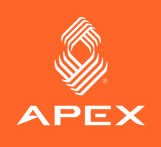Calcification of ore deposits:
Magmatic hydrothermal deposits
Porphyry type deposit
Skarn type deposit
Iron oxide apatite type deposit
Hydrothermal- magmatic deposits
Epithermal type deposits
Massive sulfide type deposits
Manto Cu-Ag type deposits
Intrusion-related polymetallic gold type deposits
Hydrothermal-Metamorphic deposits
Orogenic gold type deposits
Hydrothermal basinal Fluids deposits
Sedimentary Exhalative (Sedex) type deposits
Carbonated-hosted lead and zinc deposits
Sedimentary – hosted stratiform copper type deposits (SSC)
Magmatic deposits
Ultrabasic (Ophiolites)-related type deposits
Alkaline intrusion-related type deposits
Chemical-sedimentary deposits
Sedimentary phosphate type deposits
Weathered deposits
Bauxite related aluminum type deposits
Magmatic hydrothermal deposits
Magmatic-hydrothermal fluid circulation systems in the Earth’s crust are related with intermediate to felsic hydrous magmas, mainly at convergent plate margins, providing heat and mass transfer for the formation of ore deposits including base, precious and rare metals. Large hydrothermal deposits form also during periods of regional magmatism and tectonism, but are not strictly associated with any magmatic centers. Other hydrothermal deposits are hosted in sedimentary basins that lack temporally and spatially related magmatic activity. However, in many cases strong evidences demonstrate some association with magmatism. (Panagiotis V, 2018)
Porphyry type deposit
The most well-known among the porphyry-type deposits are the porphyry copper deposits. Originally, the term porphyry copper was applied to stock work copper mineralization in felsic, porphyritic igneous intrusions. With the development of large-scale open-pit mining methods and froth flotation techniques for efficient beneficiation of low-grade ores, the meaning of the term has been expanded to include economic considerations as well as engineering characteristics. It now refers to large (many with hundreds of million tons of ore), relatively low-grade (commonly <1 wt. % Cu), epigenetic, intrusion-related, disseminated (stock work), hypogene copper deposits that can be exploited by bulk-mining techniques. Similar large-tonnage and low-grade disseminated deposits related to igneous intrusions are also important for molybdenum (porphyry molybdenum) and tin (porphyry tin), and constitute part of the potential resources of uranium (porphyry uranium) and gold (porphyry gold). Association with porphyritic rocks is not considered an essential component of the definition of porphyry deposits, but the related intrusions almost always contain one or more porphyritic members, implying an epizonal environment (less than 5 km depth) of emplacement of partly crystallized magmas. Other common characteristics of the porphyry-type deposits include a large hydrothermal system dominated by magmatic ± meteoric fluids, pervasive hydrothermal alteration of host rocks, fracture-controlled ore mineralization, and association with breccia’s of diverse origins and variable degrees of mineralization. In this chapter we will focus on porphyry copper and porphyry molybdenum deposits. (Misra K.C, 2000).
Weathered deposits
Bauxite –related aluminum type deposits
Porphyry type deposit
Skarn type deposit
Iron oxide apatite type deposit
Hydrothermal- magmatic deposits
Epithermal type deposits
Massive sulfide type deposits
Manto Cu-Ag type deposits
Intrusion-related polymetallic gold type deposits
Hydrothermal-Metamorphic deposits
Orogenic gold type deposits
Hydrothermal basinal Fluids deposits
Sedimentary Exhalative (Sedex) type deposits
Carbonated-hosted lead and zinc deposits
Sedimentary – hosted stratiform copper type deposits (SSC)
Magmatic deposits
Ultrabasic (Ophiolites)-related type deposits
Alkaline intrusion-related type deposits
Chemical-sedimentary deposits
Sedimentary phosphate type deposits
Weathered deposits
Bauxite related aluminum type deposits
Magmatic hydrothermal deposits
Magmatic-hydrothermal fluid circulation systems in the Earth’s crust are related with intermediate to felsic hydrous magmas, mainly at convergent plate margins, providing heat and mass transfer for the formation of ore deposits including base, precious and rare metals. Large hydrothermal deposits form also during periods of regional magmatism and tectonism, but are not strictly associated with any magmatic centers. Other hydrothermal deposits are hosted in sedimentary basins that lack temporally and spatially related magmatic activity. However, in many cases strong evidences demonstrate some association with magmatism. (Panagiotis V, 2018)
Porphyry type deposit
The most well-known among the porphyry-type deposits are the porphyry copper deposits. Originally, the term porphyry copper was applied to stock work copper mineralization in felsic, porphyritic igneous intrusions. With the development of large-scale open-pit mining methods and froth flotation techniques for efficient beneficiation of low-grade ores, the meaning of the term has been expanded to include economic considerations as well as engineering characteristics. It now refers to large (many with hundreds of million tons of ore), relatively low-grade (commonly <1 wt. % Cu), epigenetic, intrusion-related, disseminated (stock work), hypogene copper deposits that can be exploited by bulk-mining techniques. Similar large-tonnage and low-grade disseminated deposits related to igneous intrusions are also important for molybdenum (porphyry molybdenum) and tin (porphyry tin), and constitute part of the potential resources of uranium (porphyry uranium) and gold (porphyry gold). Association with porphyritic rocks is not considered an essential component of the definition of porphyry deposits, but the related intrusions almost always contain one or more porphyritic members, implying an epizonal environment (less than 5 km depth) of emplacement of partly crystallized magmas. Other common characteristics of the porphyry-type deposits include a large hydrothermal system dominated by magmatic ± meteoric fluids, pervasive hydrothermal alteration of host rocks, fracture-controlled ore mineralization, and association with breccia’s of diverse origins and variable degrees of mineralization. In this chapter we will focus on porphyry copper and porphyry molybdenum deposits. (Misra K.C, 2000).
Weathered deposits
Bauxite –related aluminum type deposits





